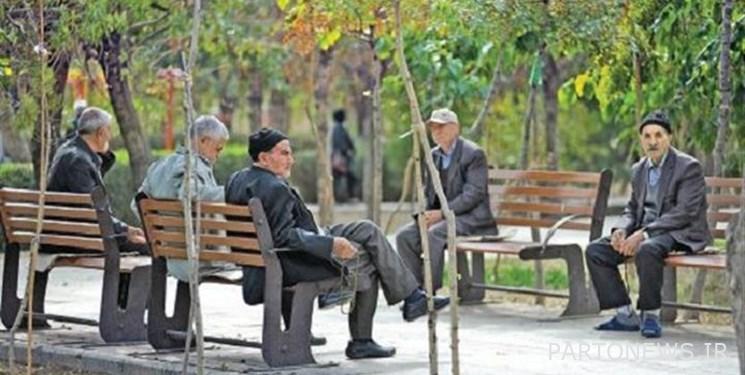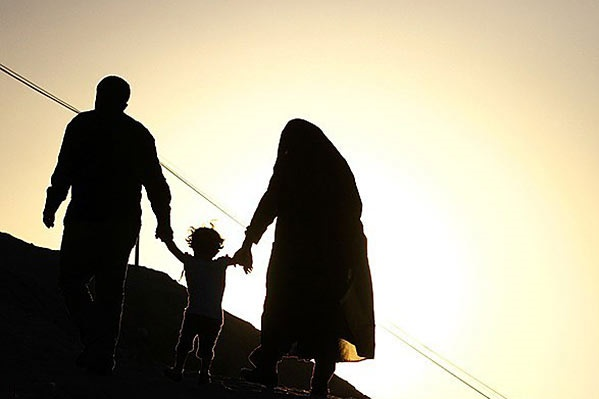Be prepared for an aging crisis in Iran!/Iranian seniors are getting “lonelier” every day

Fars News Agency Community Group – Mehdi Amiripour: Hossamuddin Allameh, the former head of the secretariat of the National Elderly Council of the country and a member of the academic staff of the lifestyle-based medical research group of the University of Medical Sciences Organization of Tehran, recently in an interview with Fars, referring to the phenomenon of the aging population of Iran, he said:Iran had one million and 700 thousand elderly people in 1355, equivalent to 5% of the country’s population, it took 43 years until the country’s elderly population reached 2 times that is 10% in 1398, and it is expected that from 1398 to 1421, it will take 23 This year, the elderly population has doubled and reached 20%.These are only a part of the conversation of the “former head of the secretariat of the National Elderly Council of the country” with the Fars news agency, which doubles the importance of raising the voice of the danger of the aging population in the country.
We had a conversation with “Hossamuddin Allameh” about topics such as the comparison of Iran’s aging situation compared to other countries, life expectancy, Iran’s entry into the super-aging crisis and the pressure of the aging crisis on pension funds. You can read this conversation below. :
Fars: What is the situation in Iran in terms of old age? Is the population of Iran passing through the age of old age, and basically it can be said that the old age situation in Iran is different compared to other countries?
The phenomenon of aging is not unique to our country and according to the 4 demographic stages, the countries of the world, especially the developed countries, are increasingly moving towards old age, and this phenomenon has occurred in the last 2 centuries and is caused by the positive and negative consequences of modernity. Among the positive consequences of modernity, we can mention issues such as improving the level of health and nutrition, economic well-being, and establishing insurances, and its negative consequences include long-term education and degree orientation, avoiding or delaying marriage, and reducing childbearing, etc.
The truth is that I do not believe that we in Iran are facing a strange and unique phenomenon caused by a foreign conspiracy in the population issue. The condition of old age is worse than ours.
The age at which old age begins in Iran; 60 years
Fars: What is the age of life expectancy in Iran compared to other countries, what is the age of entering old age in our country and compare this statistic with European countries.
The amount of individual elderly is discussed with the number of calendar elderly (above 60 years old), because it is also the index of the United Nations, the World Health Organization and the index of the Ministry of Health of the country. In the last two decades, scientists have proposed a conventional index with a more objective view, so that if we calculate the life expectancy of a population and subtract 15 years from that number, this can be a floating basis for determining the age of the beginning of the era. The old age of that society. In Japan, where the life expectancy is about 84 years, the starting age of old age can be even from 69 years, in developed countries, the starting age of old age is 65. In our country, in the last census of 2015, the life expectancy was about 75 years, and 60 years can be considered as the age for starting old age in Iran.
Iran has 35 million elderly people by 1445!
Fars: What do the forecasts say about the aging situation in Iran?
It is predicted that at the peak of the aging population of Iran in the decades of 1435 to 1445, we will have about 35 million elderly people, which is inevitable; But the aging of the population is related to the percentage of the elderly population compared to the total population, which is inversely proportional to the fertility rate of the society and can change accordingly.

In 1355, Iran had one million and 700 thousand elderly people, equivalent to about 5% of the country’s population. It took 43 years for the country’s elderly population to reach 2 times that of 10% in 1398, and it is predicted that from 1398 to 1421 In 23 years, the elderly population has doubled and reached 20%.
The problems of the overpopulation period for Iran/ 1410 Iran is an old country
Fars: You mentioned that Iran’s elderly population will double in the coming years, and in what years will Iran’s aging super crisis occur?
Doubling of Iran’s elderly population from 10 to 20 is a comparative indicator, in most of the developed countries of the world it is between 70 and 120 years old and on average it is 80 years old, but in Iran it has experienced a doubling of this growth in 23 years and even from 1421 The acceleration of the number and percentage of old age is increasing.
In the population pyramid of Iran, from 1358 to 1370, we witnessed a period of population overbirth for 12 years, the population of this period of births, in each age group they went, had its own consequences, in 1418, when those born in 1358 reached the age They reach the age of 60 and the beginning of old age, the period of Iran’s super-crisis of old age begins.
But in my opinion, Iran’s aging crisis starts in 1410 for the following reasons, firstly Iran’s elderly population, which is about 9 million and 200 thousand people, equivalent to 10.7% of Iran’s population, in 1410 will exceed 14% and according to the indicators, we will officially become an elderly country.
If the elderly population of a country is less than 7%, it is considered a young country, if it is between 7% and 14%, it is in transition and middle age, and if the number of elderly people is more than 14%, it is elderly, and if it is more than 21%, that country is very He will be old.
Pension funds should be ready for the 1410 crisis
Fars: What pressure does the aging crisis put on pension funds?
Those born in 1358, who were born in the period of overproduction of Iran’s population, will retire in 1410 at the average age of 52, which is the current average retirement age in Iran, and will put a double pressure on the country’s pension funds.
We are continuously and increasingly witnessing an increase in the number of retired workers, and in recent decades, the survival time of the elderly in old age has also increased. In 1358, Iranian workers retired with an average of 27 years of service, and according to the life expectancy, they receive an average of 13 years of pension. This is despite the fact that currently, employees serve for an average of 28 years and receive a pension for an average of 27 years.
In recent years, Iran has witnessed inflation, which has caused that despite the reform and increase of retirees’ salaries, according to the Ministry of Labor’s welfare deputy, currently, the monthly pension paid by the retirees’ funds provides about 25-33% of the livelihood portfolio of the elderly retirees. This shows the decrease in the payment capacity of pension funds compared to the poverty line.
Iranian seniors are becoming “lonelier” every day
Fars: What will be the consequences of old age for the society? What components play an important role in increasing the aging phenomenon?
The reduction of people around an elderly person and the increase of the phenomenon of elderly people alone and without a spouse is a very important social problem facing us. The terrible consequences of lifestyle changes have dramatically affected the country from those born in the 1350s onwards. And some qualitative changes in demographic characteristics have accelerated, which are mainly caused by changes in lifestyle and movement in the direction of modernity culture, which include the increase in migration from villages to cities, increase in marginal population and family dispersion, sharp decrease in families. Large living in a neighborhood is the rise of nuclear families scattered in small apartments in big cities.
In 1358, the number of divorces was 21,000, which reached 201,000 in 1400, that is, the number has increased 10 times, while the country’s population has finally increased by 2.4 times.
The beginning of the increasing trend of these social harms has increased from those born in the 1350s onwards, those born in the 1350s enter old age in 1410 and the elderly only increase and become an influential social phenomenon in various fields.
It is important to increase the rate of permanent celibacy, in 2016, the rate of permanent celibacy among the elderly was 80,000, which due to the increase in the rate of celibacy among people over 40 years old, in 1410, there will be about 1 million people who are permanently celibate.

the childless; They get older
Fars: How do you see the role of reducing the size of the household on the future of Iran’s aging?
The effect of reducing the size of the household on the future of the elderly is very important, especially in the matter of taking care of them, as well as the balance between the productive force and dependent and non-productive people. Or we are many only children in the society. Imagine 2 only children who want to marry each other, in the future they have to take care of their 4 grandparents and their spouses, and this is a big challenge. Also, between the years 1416 and 1425, Iran’s demographic window closes, that is, the number of people of working age (15 to 64 years old) is less than two-thirds of the country’s population, and the number of non-productive people (dependent and dependent and economically unproductive) is more than one It is the third of the country’s population; And in addition to reducing the labor force, it will cause the balance between working and retired people to be disrupted in providing financial resources for pension funds.
20% of seniors over 60 are working in an official job!
Fars: How are the costs of providing livelihood and health for the elderly?
One percent of our seniors receive a monthly pension of 415 thousand tomans from the welfare organization and 19 percent from the relief committee. 40% of the elderly or their spouses receive pensions and 40% of the elderly do not receive any monthly pension and unlike developed countries in Iran, there is no public pension for the elderly and currently more than 20% of the elderly over 60 years old are still in an official job. are busy working One of the consequences of population aging is the discussion of increasing health costs. At present, when the elderly population constitutes only 10% of the country’s population, more than 60% of insurance funds are spent on the treatment of the elderly. Imagine how much these costs will be in the coming years.
end of message/

